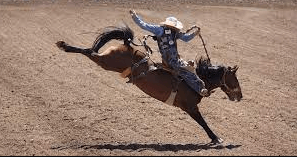How Can A Driver Influence The Result Of A Harness Race?

Harness racing is a sport that requires not only the skill and athleticism of the horse, but also the strategic decision-making and expertise of the driver. The driver plays a pivotal role in influencing the outcome of a harness race through their ability to make split-second decisions during the race. By carefully analyzing the race conditions, understanding their competitors, and skillfully handling their horse, drivers have the power to greatly impact the result.
One way in which drivers can influence harness race outcomes is through strategic decision-making during the course of the race. They must constantly evaluate factors such as track conditions, pace of the race, and positioning among other horses. By assessing these variables and adjusting their tactics accordingly, drivers can effectively position themselves for success. This may involve making bold moves to gain an advantageous position or conserving energy by strategically timing when to make a move. These calculated decisions require experience and knowledge of both racing strategies and individual horse capabilities.
Additionally, skillful handling of the horse is crucial for drivers looking to influence harness race results. Drivers must possess an intimate understanding of their horse’s strengths and weaknesses in order to maximize performance on raceday. This includes knowing how to properly utilize whip cues or verbal commands at key moments in order to motivate their horse towards victory. Furthermore, effective communication between driver and horse is essential for maintaining control throughout the race and reacting quickly to unforeseen circumstances.
Understanding competition is another important aspect that influences a driver’s ability to impact harness race results. By studying previous races or reviewing statistics on competing horses and drivers, they can identify patterns or weaknesses that can be exploited during a race. This knowledge allows them to develop strategies specifically tailored towards capitalizing on those vulnerabilities.
In conclusion, drivers play a critical role in determining the outcome of harness races through strategic decision-making, skillful handling of horses, and exploiting competition weaknesses. Their expertise allows them to adapt quickly during races while maximizing performance from their horses. Harness racing enthusiasts can appreciate the impact drivers have on race results and the freedom they possess to make decisions that ultimately shape the outcome.
Strategic Decision-Making During the Race
Strategic decision-making during a harness race involves the driver making calculated choices to manipulate the horse’s position, pace, and timing in order to optimize their chances of winning.
Race tactics play a crucial role in determining the outcome of a race, as drivers must carefully consider when to make moves such as overtaking other horses or holding back until the final stretch.
Pacing strategy is another key component of strategic decision-making, as drivers must find the right balance between conserving energy for a strong finish and maintaining a competitive position throughout the race.
By employing various techniques such as drafting behind other horses or strategically increasing speed at specific intervals, drivers can influence both their own horse’s performance and that of their competitors.
Overall, strategic decision-making during a harness race requires experience, knowledge, and analytical thinking to effectively navigate the complexities of the racecourse and give themselves the best chance at victory.
Skillful Handling of the Horse
Skillful handling of the reins and expert control over the equine’s movements are crucial factors that can significantly impact the outcome of a competitive trotting event. A skilled driver understands the importance of horse control and race tactics, employing various strategies to maximize their chances of success.
Here are four key elements that contribute to skillful handling during a harness race:
- Pace Management: The driver must have a thorough understanding of their horse’s capabilities and adjust the pace accordingly. They need to find the right balance between maintaining speed, conserving energy, and strategically positioning themselves within the field.
- Positioning: Skillful drivers possess an innate ability to read the race and anticipate movements from other competitors. They make tactical decisions to secure advantageous positions on the track, such as finding gaps in traffic or making timely moves to gain ground.
- Communication with the Horse: Effective communication between driver and horse is vital for achieving optimal performance. Skillful drivers use subtle cues through rein pressure, voice commands, and body language to guide their equine partner smoothly around turns, maintain stride consistency, and encourage maximum effort.
- Adaptability: Harness races often involve unpredictable scenarios such as changes in weather conditions or unexpected interference from other horses. Skilled drivers remain flexible and quickly adapt their strategies when faced with unforeseen circumstances, making split-second decisions that can determine success or failure.
By mastering these aspects of skillful handling, drivers can influence the result of a harness race by maximizing their horse’s potential while outmaneuvering opponents strategically. These elements require experience, knowledge of equine behavior, analytical thinking skills, and a deep understanding of racing tactics—all contributing to an engaging style for an audience yearning for freedom on both conscious and subconscious levels.
Understanding and Exploiting the Competition
Understanding and exploiting the competition’s weaknesses and vulnerabilities is a critical factor in gaining an upper hand and capitalizing on opportunities to secure victory in a highly competitive trotting event.
In harness racing, race analysis plays a crucial role in determining the strengths and weaknesses of each competitor. By carefully studying past performances, analyzing previous races, and observing patterns of behavior, drivers can develop valuable insights into their opponents’ strategies and capabilities.
This knowledge allows them to devise effective psychological tactics that can be used to unsettle their rivals during the race. For example, drivers may strategically position themselves in relation to their competitors, making strategic moves to disrupt their rhythm or force them into uncomfortable situations.
By exploiting these vulnerabilities, skilled drivers can gain an advantage over their opponents and increase their chances of crossing the finish line first.
Ultimately, understanding the competition and employing psychological tactics are essential components for success in harness racing events.
Frequently Asked Questions
How can a driver effectively communicate with their horse during a harness race?
Effective communication between a driver and their horse during a harness race is crucial for success. It involves utilizing various techniques such as body language, voice commands, and rein adjustments to guide the horse and maximize its performance. This requires a deep understanding of horse training principles.
What are some common mistakes drivers make that can negatively impact their race performance?
Common driver mistakes that negatively impact race performance include poor judgment in pacing, improper positioning on the track, and ineffective use of reins. Improving driver technique through training and experience can minimize these errors and optimize race outcomes.
Are there any specific techniques or strategies that drivers use to gain an advantage over their competitors?
Specific driver techniques, psychological strategies, race positioning, whip usage, and pace manipulation are all tools that drivers can use to gain an advantage over their competitors in a harness race. These techniques require skill and experience to execute effectively.
How important is the physical fitness and conditioning of the driver in harness racing?
Physical fitness plays a crucial role in driver performance in harness racing. A well-conditioned driver demonstrates enhanced physical capabilities, such as strength, endurance, and agility, which can positively impact their ability to handle the horse and ultimately influence the race’s outcome.
Can a driver’s experience level significantly impact the outcome of a harness race?
The experience level of a driver can significantly impact the outcome of a harness race. The driver’s mental state and decision-making abilities play a crucial role in determining race strategies, maneuvering tactics, and overall performance on the track.
Conclusion
In harness racing, a driver plays a crucial role in influencing the outcome of the race. Through strategic decision-making, skillful handling of the horse, and understanding and exploiting the competition, a driver can significantly impact the final results. By implementing effective tactics and making well-informed choices during the race, drivers can enhance their chances of success.
During a harness race, experienced drivers demonstrate their knowledge by strategically positioning themselves on the track. They carefully assess factors such as speed, stamina, and post position to determine when to make key moves that can give them an advantage over their competitors. These decisions require a deep understanding of both their own horse’s capabilities and those of the other horses in the field.
Moreover, skillful handling of the horse is essential for achieving optimal performance. A skilled driver maintains a strong connection with their horse and uses subtle cues to guide its movements throughout the race. By adjusting reins tension or using body language effectively, they can encourage their horse to accelerate or conserve energy at critical moments. This level of finesse allows drivers to maximize their horse’s potential and gain an edge over other participants.
Furthermore, successful drivers possess an acute awareness of their competition’s strengths and weaknesses. They study past performances and analyze each rival’s racing style to identify opportunities for exploitation. For instance, if they observe that a competitor tends to tire towards the end of races due to excessive early speed, they might choose to adopt a conservative approach initially before making a decisive move later on.
In conclusion, harness racing is not solely determined by equine ability but also heavily influenced by skilled drivers who make strategic decisions during races. Their expertise in maneuvering on track positions them optimally for success while ensuring efficient use of their horse’s energy reserves. By exploiting weaknesses in opponents’ strategies while capitalizing on their own strengths, knowledgeable drivers create opportunities for victory through astute tactical choices – proving that skillful handling behind those reins is often what separates winners from the rest.



